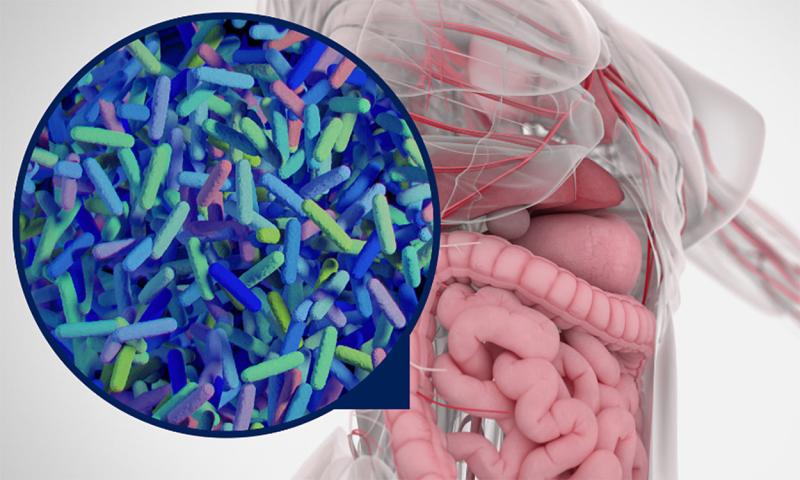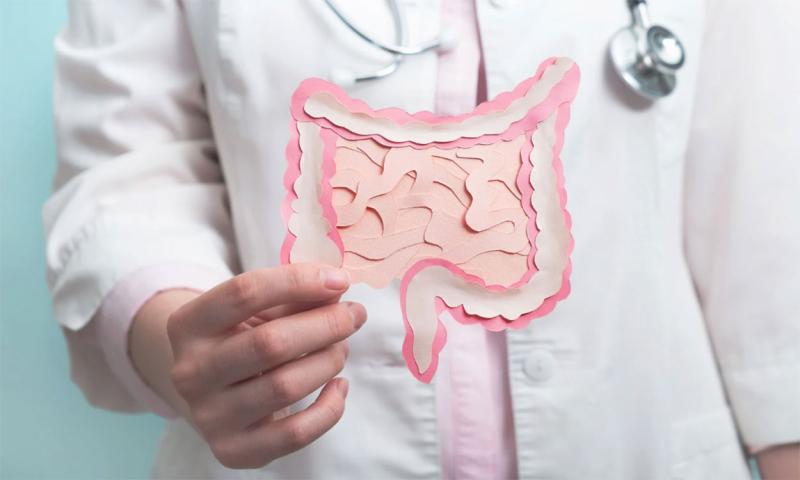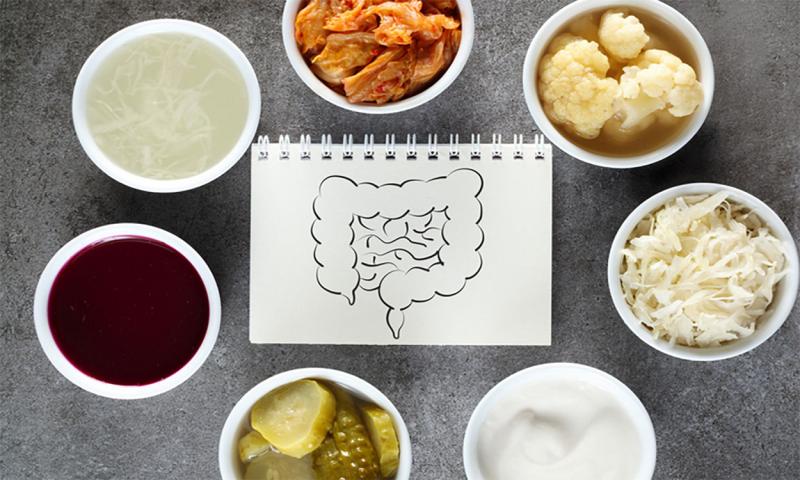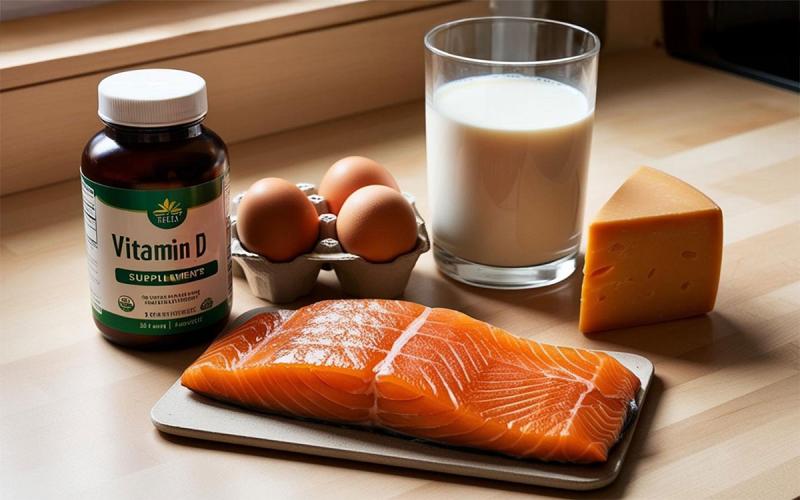Written by Claudia Botzet, former SDSU Extension Nutrition Field Specialist.
Our bodies are inhabited with trillions of microorganisms. Sounds like a lot, right? But just what are these abundant microorganisms in our bodies? Microorganisms, as their name shows, are tiny organisms that can only be seen through a microscope. They include bacteria, protozoa, algae, and fungi.
A majority of the trillions of microorganisms in our body reside in the large intestine, along with other parts of the gastrointestinal (abbreviated as GI) tract. The GI tract expands from the mouth to the rectum, and it is in charge of consuming and digesting food, absorbing nutrients from ingested food and supplements, and eliminating waste from our body.
What is the human microbiota and gut microbiome?

The human microbiota is what we call the trillions of microorganisms in our body. Microbiomes are a specific area within the body where the microbiota are. Our bodies have multiple microbiomes, including the gut, skin, and mouth. However, in this article, we will focus on the gut microbiome.
Studies have shown that our gut microbiome begins to colonize within the womb; however, most of the colonization begins at birth while passing through the birth canal. Many factors have an influence on our young microbiome, including vaginal and cesarean section birth, breastfeeding or infant formula feeding, early use of antibiotics, introduction to solid food and more. Our gut microbiome has been shown to stabilize or mature at around the age of 3 years old. As we get older, our gut microbiome tends to balance itself; however, it can be affected by genetics, age, frequency of antibiotics taken, diet, physical activity level, and chronic diseases.
So, how does our gut microbiome impact our health?

Our gut health contributes to our overall health in many ways.
- Digestion and Nutrient Absorption
The microbes in our gut break down and ferment non-digestible fibers, called oligosaccharides, that we consume daily. These fibers are found in fruits, vegetables, whole grains, and nuts. A healthy gut also absorbs more vitamins and nutrients from food. Studies have shown that the microbes in the gut contribute to the regeneration of cells in the intestines, creating more surface area and, therefore, absorbing more vitamins and nutrients. Specifically, the microbes in the gut generate vitamins K, B, and B12. - Immunity
Colonies of beneficial microbes can defend our body’s health from harmful microbes entering the gut. They do this by training the body's immune cells on what bacteria are good and bad. The microbes can also affect our bodies immune response by deactivating the release of anti-inflammatory molecules to prevent unnecessary responses to the bacteria that is always in our gut. Having a variety of microbes in the gut may also relieve symptoms of irritable bowel syndrome, diarrhea, and constipation. - Chronic Disease Prevention
Several chronic disease conditions, such as gastrointestinal inflammatory, metabolic, neurological, cardiovascular, and respiratory complications, have been associated with differences in gut microbiome function and composition.
What’s the deal with prebiotics and probiotics?
Probiotics
Probiotics are living microorganisms, made up of good bacteria, that play a major role in gut health. Probiotics form the structure of GI microorganisms and prevent the growth of bad bacteria. They help the body build a protective layer of mucus within the GI tract, improving immunity. Probiotics also play a role in digesting food, creating vitamins, and breaking down and absorbing medications. Probiotics are most abundantly found in the gut, but they are also present in the mouth, lungs, urinary tract, vagina, and skin.
Sources of Probiotics
- Yogurt
- Sourdough
- Kombucha
- Cottage cheese
- Fermented pickles
- Fermented sauerkraut
- Kimchi
- Supplements
Prebiotics
Prebiotics are food for the microorganisms (probiotics) in the gut. When the microorganism's breakdown and ferment the prebiotics, byproducts are produced that benefit the gut. The byproducts can assist in mucus production, aid in immunity and inflammation, and provide energy to the colon cells. Prebiotics can also help stimulate the body to make hormones that aid in hunger and fullness cues, help regulate bowel movements, and increase the production of living microorganisms made up of good bacteria.
Sources of Prebiotics
- Barley
- Rice
- Oats
- Garlic
- Onions
- Asparagus
- Apples
- Carrots
- Raspberries
- Green beans
- Tomatoes
- Potatoes
In Summary

It is important to eat a well-balanced diet with a variety of foods to maintain good gut health. Check out SDSU Extension’s Pick It! Try It! Like It! Preserve It! Resources for recipes containing foods with probiotics and prebiotics.
References
- National Institute of Health: National Cancer Institute. Microorganism.
- Grace A. Ogunrinola, John O. Oyewale, Oyewimu O Oshamika., Grace I Olasehinde. The Human Microbiome and Its Impacts on Health. June 2020.
- Luke K. Ursell, Jessica L. Metcalf, Laura Wegener Parfrey, Rob Knight. Defining the Human Microbiome. February 2013.
- J. Clifford, T. Weir. The Gut Microbiome and Health. November 2017.
- Nihal Hasan, Hongyi Yang. Factors Affecting the Composition of the Gut Microbiome, and its Modulation. August 2019.
- Siyong You, Yuchen Ma, Bowen Yan, Wenhui Pei, Qiming Wu, Chao Ding, Caoxing Huang. The Promotion of Mechanism of Prebiotics for Probiotics: A Review. October 2022.


